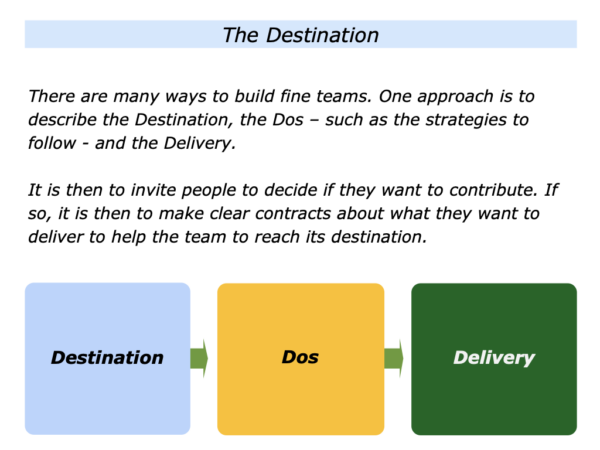
There are many ways to build fine teams. One approach is to describe the following things to people.
The Destination – the team’s goals and the benefits of achieving the picture of success;
The Dos – the strategies people can follow to do their best to reach the destination;
The Delivery – the specific things that need to be delivered – and by when – on the way to reaching the destination.
The next step is to invite people to take time to reflect and decide if they want to contribute. If so, it is then to make clear contracts about their best contribution towards helping the team to reach the destination.
Imagine that you want to follow elements of this approach in your own way. This involves focusing on the following themes.
The Destination
Good leaders often start from their destination and work backwards. They start by picking a date in the future. Bearing in mind what the team can control, they then go through the following steps.
They clarify the real results the team can achieve by that date and translate this into a clear picture of success.
They clarify the benefits – to all the various stakeholders – of achieving the picture of success.
They clarify the team’s chances of achieving these aims – on a scale 0-10 – and how to increase the chances of achieving the picture of success.
Such leaders do lots of due diligence on this latter theme. They clarify: a) the team’s present ability to achieve the goals; b) the specific things it can do to improve the chances of success. This leads to the next stage.
The Dos
Good leaders play many scenarios regarding how to reach the destination. Bearing in mind what the team can control, they then go through the following steps.
They clarify the key strategies the team can follow to give itself the greatest chance of success.
They clarify the potential challenges and how to manage these successfully.
They again clarify the key strategies and ensure that following these will give the team the greatest chance of success.
Such leaders then translate these strategies into the specific actions – the dos – that people can follow to do their best to reach the destination. The next step is to communicate these to their people.
When doing so, it is important to bring each of these strategies to life by: a) giving the reasons for following these; b) giving specific examples that resonate with people. Different leaders do this in different way. Here is one example.
The Dos
The key strategies we can follow to do
our best to reach the destination are these.
To Build On Our Strengths
To keep building on our strengths as a company whilst managing the consequences of any weaknesses;
To keep working with the kinds of customers with whom we work best;
To keep delivering high professional standards and, when doing so, be positive and approachable.
To Help Our Customers
To Achieve Success
To do lots of research to make sure that you understand the customer and their potential challenges and goals;
To show that you understand the customer’s world and then, when appropriate, make clear contracts about the specific things we can deliver to help them to achieve their goals;
To perform superb work, get some early. wins and help the customer to achieve success.
To Help All Our Stakeholders
To Achieve Ongoing Success
To help our company to keep developing and to do what is required to achieve ongoing success;
To, where appropriate, help our customers to keep developing and to achieve ongoing success;
To help yourself and your colleagues to keep developing and to achieve ongoing success.
Different leaders will, of course, focus on different strategies that people can follow to work towards the team’s goals. They may then move on to the next stage.
The Delivery
Good leaders work with their key colleagues to clarify the agreed road map to the destination. Bearing in mind the final results to be achieved, they take the following steps.
They clarify the specific things that must be delivered by when – including getting some early wins – on the road towards achieving the picture of success.
They make clear contracts about who will be responsible – who will be the mission holders – for delivering certain outcomes on the road towards achieving the picture of success.
They clarify the support that their people will need, the things they will do to report their progress and anything else that can be done to help them and the team to achieve the picture of success.
They ensure their key colleagues are clear on what needs to be done. Bearing this in mind, they move on to the next stage.
Communicating The
Destination, Dos And Delivery
Good leaders aim to communicate this information to people in a positive and professional way. Bearing this in mind, they sometimes take the following steps.
They aim to give people the big picture by describing the destination, the dos and the delivery together with the benefits of reaching the destination.
They aim to bring these things to life by giving reasons for taking this approach and also giving examples: a) that resonate with people; b) that enable them to see how they can help the team to reach the destination.
They aim to then give people time to reflect to decide if they want to contribute and, if so, to make clear contracts about their parts in helping the team to reach its destination.
Different leaders do this in different ways. The following pages provide one framework for communicating these to their people. You would, of course, do this in your own way.
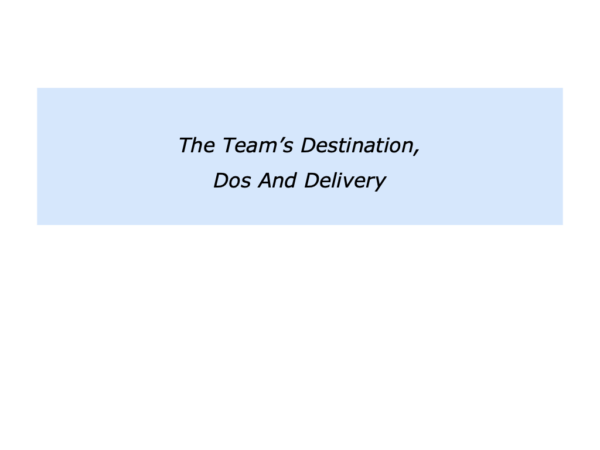
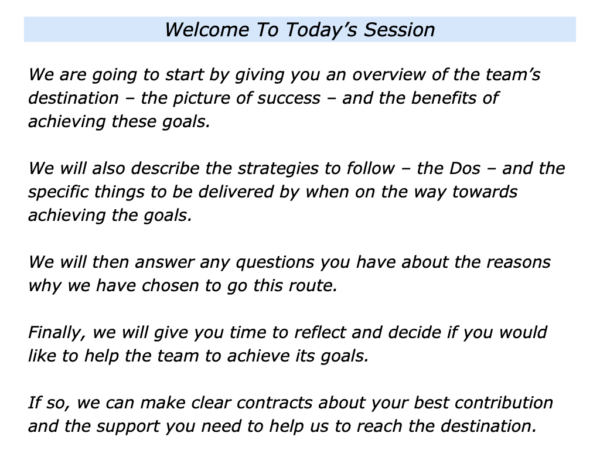
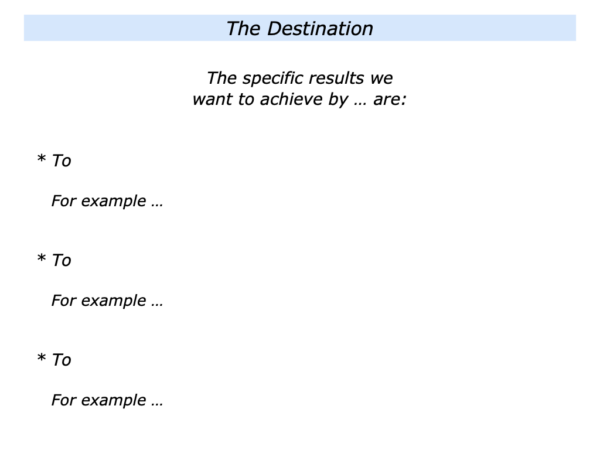
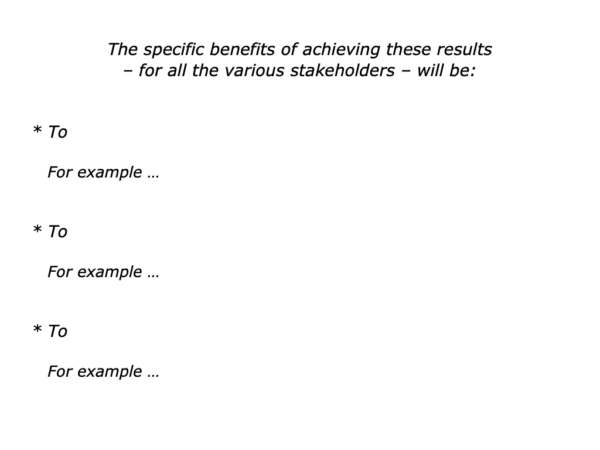
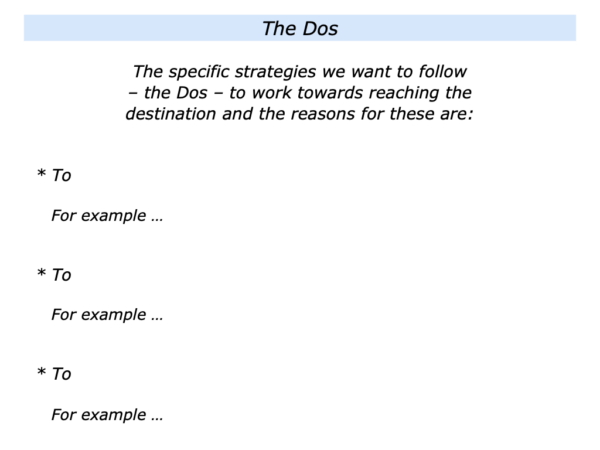
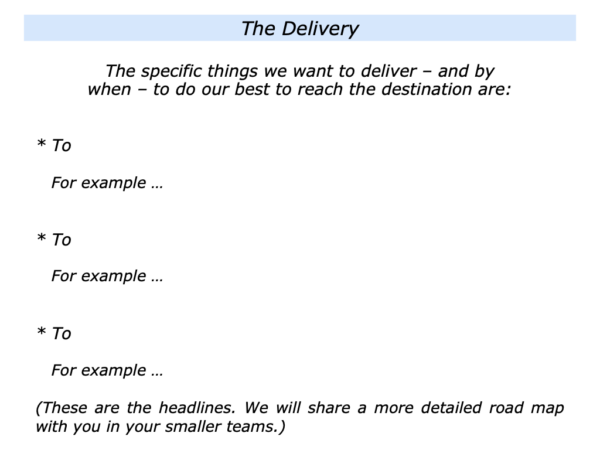
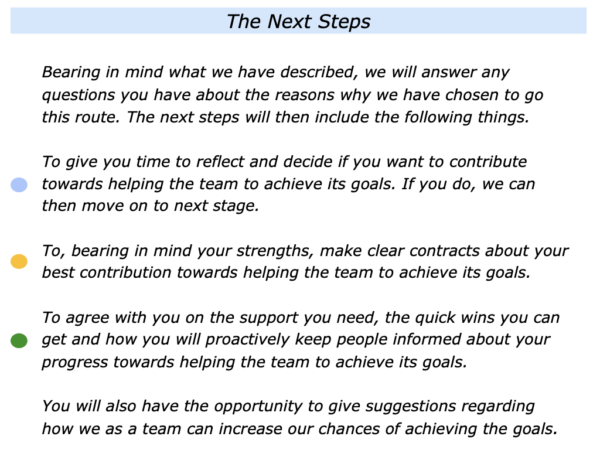
There are many ways to build fine teams. One approach is to describe the destination, the dos and the delivery. The next step is to invite people to decide if they want to help the team to achieve its goals.
If so, it is then to make clear contracts about their best contribution, the support they need and how they will keep people informed about their progress towards helping the team to achieve its goals.
Good leaders then encourage and enable people to perform superb work, find solutions to challenges and focus on continuous improvement. They do their best to help their people and the team to reach the destination.
Let’s return to your own work. Looking ahead, can you think of a situation where you may want to follow elements of this approach? How can you do this in your own way?
If you wish, try tackling the exercise on this theme. This invites you to complete the following sentences.
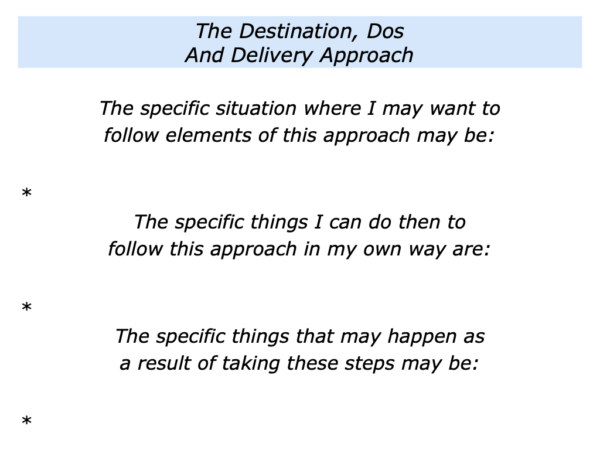






Leave a Reply